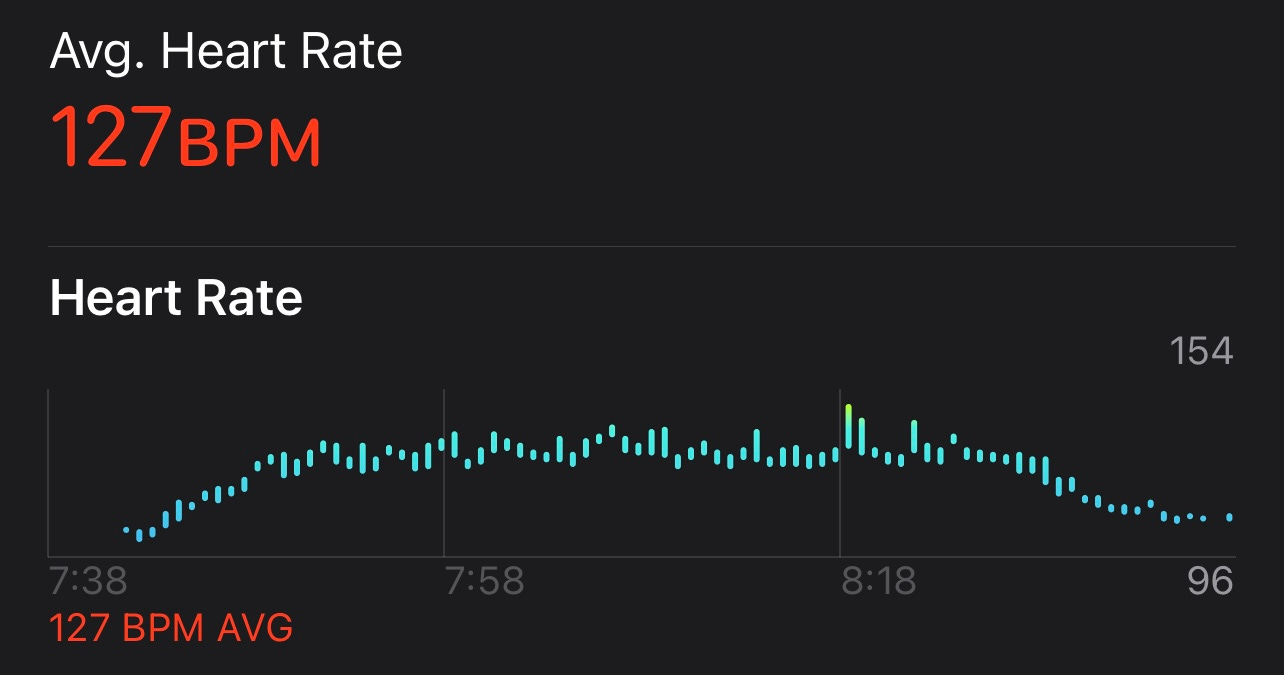A Fool-Proof Cardio Prescription
A simple guide to how much, how often, and how intense you should be doing your cardio.
In this edition of Momentum you’ll learn how to program your own cardio workouts to make sure you’re getting in enough cardio for optimal health.
We all know we should be doing some cardio for our health.
Our hearts, lungs, and brains depend on it.
But how much should we be doing each week? How hard does it need to be? Are some cardio choices better than others?
Let’s take a look…
The Current Physical Activity Guidelines
The physical activity guidelines for adults set by the World Health Organization give us a minimum exercise goal to achieve good health.
These minimum guidelines for cardio are:
150-300 minutes per week of moderate intensity cardiovascular exercise OR
75-150 minutes per week of vigorous intensity cardiovascular exercise OR
An equivalent combination of both moderate and vigorous intensity cardiovascular exercise
They also include a minimum strength recommendation of:
2 days per week of muscle strengthening exercise that work all of the major muscle groups of the body
Sadly, only 24.2% of Americans currently meet these guidelines.
For this post, we are focusing on how to achieve the cardio goals, so let’s look at those a little more.
Meeting & Exceeding Physical Activity Guidelines
Now, remember that these are minimum guidelines and more would certainly be better.
But, what counts? How hard do we have to work to meet these guidelines?
I think for cardio target heart rate ranges work really well to ensure we are working at the appropriate intensity.
The American College of Sports Medicine tells us that in order for us to be working out at a moderate intensity our heart rate should be between 64%-76% of maximum and for vigorous intensity our heart rate should be between 77%-93% of max.
Use this formula to calculate your estimated maximum heart rate.
Estimated Max HR = 208 - (0.7 x your age)
For example, for my moderate intensity cardio sessions I work to keep my heart rate between 118 bpm and 140 bpm.
This workout I rode my stationary bike for 60 minutes and my average HR was 127.
Go Do Some Cardio
You’ve got the guidelines and you’ve got your target heart rate ranges.
Now its time to get out there and do some cardio!
The nice thing is that you can do a wide variety of activities and do as little or as much as you’d like during each individual bout of exercise to get great results.
I went on a 2 hour, hilly hike this passed weekend while wearing a 35# weighted vest. It was great and knocked out almost my full cardio prescription for the week!
Remember, if you want specific goals you have to do specific things.
If you want heart health, longevity, and a better metabolic panel on your next blood work then you can do any cardio that meets these guidelines.
If you want to run a half-marathon in under 2 hours then you’ve gotta run.
Remember, if you’re not there yet, that’s okay! Any and all movement is good.
My nudge would be to increase duration and intensity gradually until you do get there.
Wrapping Up
Make sure you’re meeting the current physical activity guidelines for both strength and cardio. For cardio, try to log between 150-300 minutes of moderate intensity cardio at a heart rate of between 64-76% of max OR 75-150 minutes of vigorous intensity cardio at a heart rate of between 76-93% of max OR a combination of the two while also doing at least 2 days of muscle strengthening work.






